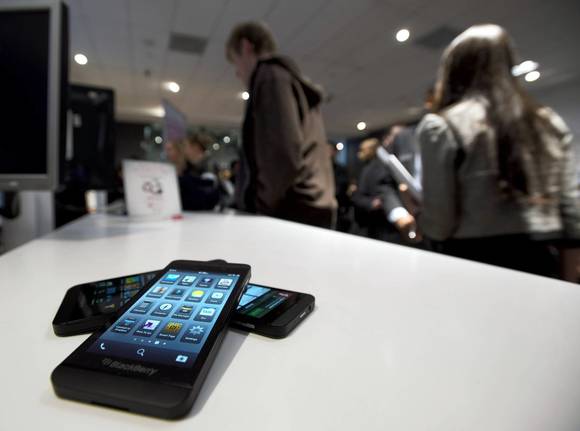The gig: Lawyer-turned-serial-entrepreneur Brian Lee, 41, is pulling double duty as the chief executive of two celebrity-backed e-commerce websites: ShoeDazzle, co-founded with Kim Kardashian, and Honest Co., co-founded with Jessica Alba. The companies are headquartered in Santa Monica and offer customers monthly subscription plans in addition to typical a la carte shopping for shoes and baby products, respectively.
ShoeDazzle has more than 15 million registered users and last year posted $100 million in revenue, up 80% from 2011; it has raised $66 million from investors including venture capital firm Andreessen Horowitz. Honest Co., launched a year ago, has yet to release membership or financial numbers but has raised $27 million.
From Seoul to L.A.: Lee was born in Seoul. When he was 1, his family immigrated to Huntington Beach, where he grew up.
As an 8-year-old, Lee mapped out his trick-or-treating route on Halloween so he could collect as much candy as possible. When he got home, he separated his loot into Ziploc bags, which he sold at school for 25 cents each.
"Cost of goods: zero. Profit margins: 100%, outside of my own little labor," he said. "I probably did that for five years."
He now lives in Marina del Rey with his wife, Mira; their 4-year-old son, Davis; and their 1-year-old daughter, Madison.
Education: Bachelor's degree in business economics from UCLA in 1993, J.D. from UCLA School of Law in 1996.
Bold cold call: After practicing law for a few years, Lee came up with the idea for LegalZoom, which offers self-help legal documents such as divorce and bankruptcy forms, prenuptial agreements and wills. He wanted a high-profile name to represent the start-up, and decided to approach O.J. Simpson defense attorney Robert Shapiro.
Lee got Shapiro's number from 411 and called him at 10 p.m. "He picked up the phone and said, 'Hi, this is Robert Shapiro, how can I help you?' and I said, 'Well, my name is Brian Lee and I have a business opportunity I'd like to run by you.'... I think he heard the desperation in my voice and he said, 'You've got two minutes.'"
LegalZoom, based in Glendale, launched in 2001.
Online shoe shopping: ShoeDazzle was inspired by Lee's wife, who one day returned from a shopping spree on Robertson Boulevard with a pair of pricey designer shoes. When Lee asked her why she didn't just go to Loehmann's or DSW, she said discount chains didn't provide the type of personalized, one-on-one service that small boutiques did. Lee set out to replicate that experience online and met Kardashian through Shapiro, who is a family friend.
ShoeDazzle launched four years ago as an online subscription business, with members viewing a customized showroom of shoes based on a personal fashion quiz and choosing one new pair to receive every month for $39.95 including shipping.
Taking back the reins: In November, Lee became CEO of ShoeDazzle for a second time. He returned after the departure of Bill Strauss, who scrapped the company's subscription-based business model last year, leading to speculation that the company wasn't doing well.
In his first 100 days on the job, Lee laid off about two dozen employees and hired celebrity fashion stylist Rachel Zoe as the company's chief stylist; ShoeDazzle also began introducing one new shoe style every day. This month the company will roll out an optional $9.95-a-month VIP membership program that includes free shipping, early access to sales, discounts and an extended return policy.
Since a site relaunch in January, orders have increased 30% and repeat visits are up 12%, Lee said. The company sells as many as 250,000 pairs of shoes per month.
From shoes to babies: Lee was approached by Alba when the actress wanted to start an eco-friendly baby products line. Honest Co. sells diapers, shampoo, sunscreen and household items online that are nontoxic and made with organic ingredients.
Caffeine junkie: As the CEO of two companies, Lee arrives at Honest Co. offices by 7 a.m. every day and is there until 9:30 a.m. He then heads over to nearby ShoeDazzle, where he stays until 5 p.m. or so. Then it's back to Honest Co. until about 8 or 9 p.m.
"I drink seven Coca-Colas a day," he said. "Regular Coke, which is really bad for me."
Advice to entrepreneurs: "Believe in the idea with 100% certainty," Lee said. "But also don't be scared to change that idea and pivot very quickly. Because as an entrepreneur, nothing ever goes to plan."
For instance, Lee said that in the early days of LegalZoom, the company created do-it-yourself software programs such as Estate Planning in a Box that it hoped to sell at Staples and OfficeMax. When LegalZoom realized that Internet-based downloading was the future, it dropped those plans.
"We spent a lot of resources on it," he said, "but we weren't afraid at all to just cut it."
andrea.chang@latimes.com











